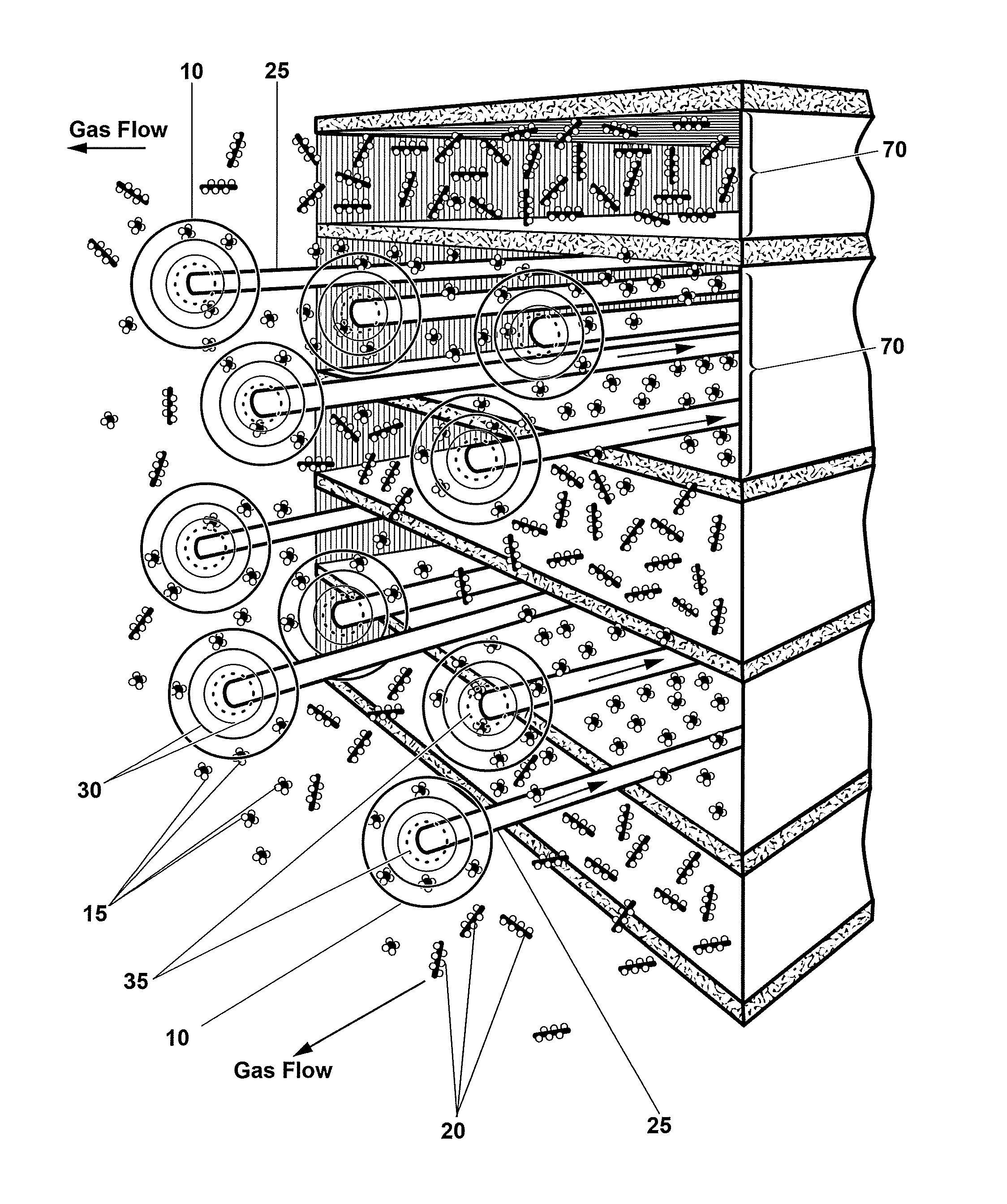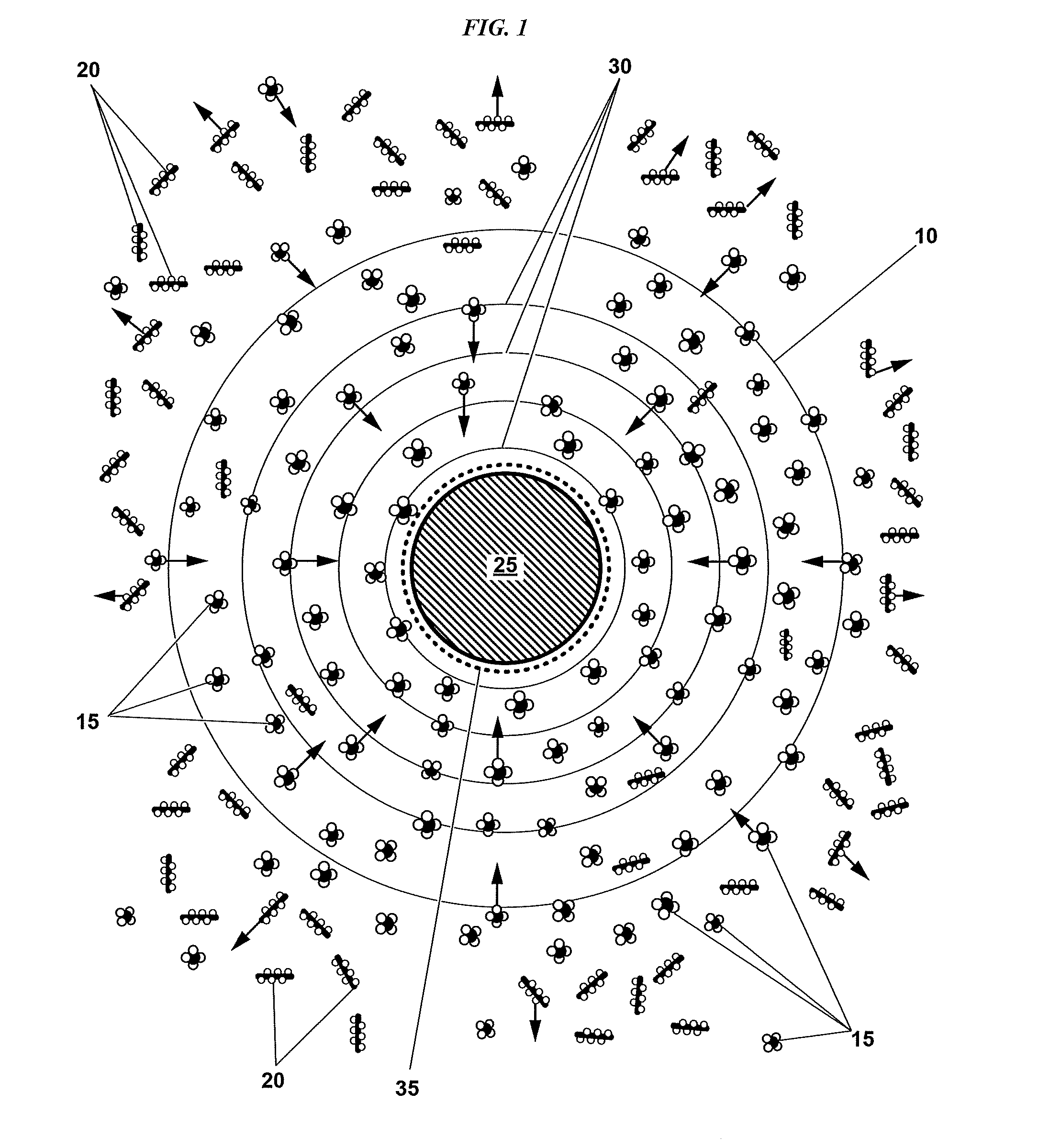Method and Apparatus for Fabricating Fibers and Microstructures from Disparate Molar Mass Precursors
a technology of molar mass precursors and fibers, applied in the direction of textiles, paper, chemical vapor deposition coatings, etc., can solve the problems of reducing the size of the boundary layer, and the rate limitation step of diffusion across the boundary layer in the reaction, so as to enhance fiber and microstructure fabrication and specific microstructure properties
- Summary
- Abstract
- Description
- Claims
- Application Information
AI Technical Summary
Benefits of technology
Problems solved by technology
Method used
Image
Examples
Embodiment Construction
[0075]FIGS. 1 through 40 illustrate various views and embodiments of the present invention, and supporting graphs and data. Various embodiments may have one or more of the components outlined below. Component reference numbers used in the Figures are also provided.[0076]10 thermal diffusion region[0077]15 low molar mass (or LMM) precursor[0078]20 high molar mass (or HMM) precursor[0079]25 fiber[0080]30 concentration gradient[0081]35 reaction zone[0082]40 primary heating means[0083]45 tensioner[0084]47 tension adjustment device[0085]50 spooling device / mandrel[0086]55 coaxial tube[0087]60 low molar mass (or LMM) precursor tube[0088]65 high molar mass (or HMM) precursor tube[0089]70 precursor planar flow sheets[0090]75 gas bubble[0091]80 internal thermal diffusion region[0092]85 external thermal diffusion region[0093]90 fluid (internal in two phase system)[0094]95 vessel seals[0095]100 vessel walls[0096]101 solid source of HMM precursor (e.g. wax)[0097]102 liquid source of HMM precurso...
PUM
| Property | Measurement | Unit |
|---|---|---|
| Pressure | aaaaa | aaaaa |
| Mass | aaaaa | aaaaa |
| Concentration | aaaaa | aaaaa |
Abstract
Description
Claims
Application Information
 Login to View More
Login to View More - R&D
- Intellectual Property
- Life Sciences
- Materials
- Tech Scout
- Unparalleled Data Quality
- Higher Quality Content
- 60% Fewer Hallucinations
Browse by: Latest US Patents, China's latest patents, Technical Efficacy Thesaurus, Application Domain, Technology Topic, Popular Technical Reports.
© 2025 PatSnap. All rights reserved.Legal|Privacy policy|Modern Slavery Act Transparency Statement|Sitemap|About US| Contact US: help@patsnap.com



